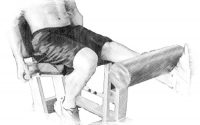Age-Related Decline in Finger Tactile Sensitivity
Touch sensitivity generally declines with age, contributing to loss of manual dexterity and tactile function. A study published in Frontiers in Aging Neuroscience investigated how touch sensitivity changes with age across three body sites: the index finger pad, forearm, and cheek.
Using force detection tests and spatial discrimination tasks, data were collected from 96 healthy women aged 20 to 75.
The researchers found that touch sensitivity in the glabrous (hairless) skin of the finger deteriorates with age, but not on the hairy skin of the forearm or cheek. The decline in the finger’s tactile sensitivity was evident in both detection and spatial discrimination tests. In contrast, cheek sensitivity remained high, and a relationship was observed between touch detection on the forearm, finger, and cheek.
The differences in aging effects on various skin areas may stem from intrinsic factors, such as skin heterogeneity, mechanoreceptor density, and skin hydration. Glabrous skin has a thicker epidermis and more mechanoreceptors, which degrade with age, while hairy skin, particularly on the face, benefits from hairs that transmit mechanical stimuli, aiding in touch perception. Extrinsic factors, like the constant use of hands and exposure to harsh conditions, might also contribute to faster tactile decline in the hands compared to more protected body areas like the forearm.
The study also suggested that certain people, especially those who use fine manual skills in their professions, may maintain better tactile sensitivity, possibly through skin care routines. Improved touch tests, especially for hairy skin, and expanding the research to include a wider age range and both genders would help better understand tactile sensitivity’s relationship with aging. Understanding these changes could enhance early detection of somatosensory issues and improve communication through touch in older adults.4o
The study suggests that while glabrous (hairless) skin on the index finger becomes less sensitive with age, tactile sensitivity in hairy skin is preserved, raising questions about the role of daily activities and the function of hairs in maintaining tactile sensitivity.
For manual therapists, this study highlights the importance of understanding how aging affects tactile sensitivity, particularly the decline in the glabrous skin of the fingers, which may reduce a patient’s ability to perceive subtle touch and manual dexterity. However, tactile sensitivity in hairy skin, such as the forearm and cheek, remains stable with age, offering alternative areas for sensory engagement. Therapists may need to adapt their techniques.
For a manual therapist who is aging, the study’s findings have personal and professional implications. As tactile sensitivity in the hands, particularly in the glabrous skin of the fingers, tends to decline with age, this could affect their ability to perceive subtle sensations during therapy, which is crucial for delivering precise treatments.
To mitigate these effects, aging manual therapists may need to adapt their techniques, relying more on visual cues or client feedback to compensate for reduced tactile perception. They might also benefit from maintaining their own skin hydration and health, as moisturizing and skin care routines have been shown to help sustain tactile sensitivity. Regular hand exercises to maintain dexterity and fine motor skills could also be helpful. Additionally, being aware of these changes early on could prompt therapists to seek continuing education or adjust their practice in ways that maintain their professional effectiveness over time.
